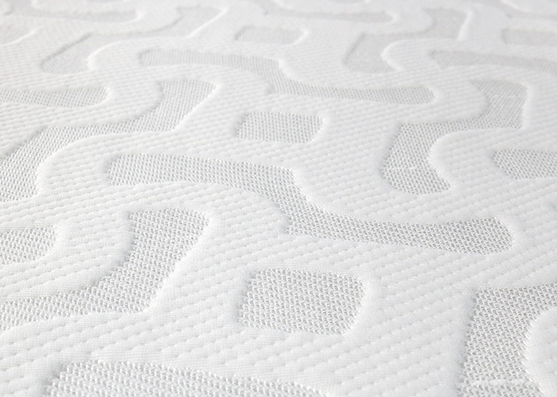PH value is a very important quality index of textiles, and it is the mandatory implementation index of GB18401-2010 "National Technical Standards for Basic Safety of Textiles". Unqualified pH value is also the most common quality problem in textile processing, production and trade, which is causing more and more problems. People's attention, this article will discuss with you how to control the pH value of textiles.
1. Definition of pH value:
The pH value is the acidity and alkalinity, and the human skin is weakly acidic. Under such environmental conditions, it can prevent the invasion of bacteria. Therefore, if the pH value of the textile is slightly acidic or neutral, it is conducive to protecting human health; otherwise, the pH value of the textile is too high High or low will destroy the balance and resistance of the skin, which may cause skin allergies or induce infections and cause bacteria to invade.
2. Source of abnormal pH:
The main reason is that the pH control of textiles during dyeing and finishing is insufficient, the acid neutralization after wet treatment is insufficient, or the cleaning is not thorough, and the dyeing and finishing processes that are likely to cause abnormal pH are mainly alkali reduction, polyester printing washing, active printing washing, and cotton. Desizing, scouring and mercerizing etc.
3. Comparison of different measurement methods of PH value of textiles:
(1), Chinese standard (GB/T 7573-2009)
Weigh 3 samples of 2±0.05g, cut them into small pieces of 5×5 mm, put them in a flask containing 100ml of distilled water, shake the flask to fully wet the sample, and place the flask on a shaker to shake 2 After ± 5 minutes, the pH value of the water extract (without fabric) is directly measured by a PH meter at room temperature. Each sample is tested 3 times, and the average value of the second and third sample results is taken as the final result. Accurate to 0.1.
(2), European Union standard (EN 1413-1998)
Weigh three 2±0.05g samples, cut them into small pieces of 5×5 mm, and put them into a flask containing 100ml of potassium chloride solution (0.1mol/L) or 100ml of distilled water. Shake the flask to make the sample sufficient After soaking, shake the flask on the shaker for 2 hours, then directly measure the PH value of the water extract (without fabric) with a PH meter at room temperature. Perform 3 tests for each sample, and take the second and third The average value of the sample results is used as the final result and is accurate to 0.1.
(3), Japanese standard (JIS L 1096-1999)
Weigh 5±0.1g sample, cut it into small pieces of 1×1mm, boil it in 50ml distilled water and keep it for 2 minutes, put the sample in the flask, shake the flask to fully wet the sample, and keep it at room temperature Leave for 30 minutes to remove the sample. When the temperature of the water extract reaches 25±2℃, use a PH meter to directly measure the PH value of the water extract, to the nearest 0.1.
(4) American Standard (AATCC 81-2001)
Weigh 10±0.1g sample, cut it into small pieces, boil in 250ml distilled water and keep it for 10 minutes, put the sample in the flask, shake the flask to fully wet the sample, continue to boil for 10 minutes, cool After reaching room temperature, remove the sample and directly measure the PH value of the water extract with a PH meter to the nearest 0.01.
4. How to deal with the unqualified pH of textiles?
The pH of the fabric or garment is unqualified. Generally, the pH of the fabric is readjusted by the principle of acid-base neutralization. Most of the unqualified pHs are alkaline, and there are many kinds of acid agents that can be adjusted. The most common are glacial acetic acid and citric acid. Glacial acetic acid has a volatile and irritating odor. Citric acid adjusts the pH more stable, so It is generally recommended to use citric acid to adjust it, but it is necessary to pay attention to control the dosage. Excessiveness will affect the feel and easily cause yellowing.
For example: if the measured pH value of the fabric is 9-10, the pH value of the citric acid aqueous solution can be adjusted to 4-5, and then soaked for 10 minutes and allowed to dry. Before sending it to the customer, we will send a formal inspection structure to test and confirm the pass, and reduce the trade risk.
5. Control method of pH value:
Only by analyzing the cause of the unqualified pH value and applying the right medicine can we effectively reduce the unqualified rate of textile pH value:
(1) The fabric enterprises strengthen the quality awareness of relevant quality control personnel and the study and training of textile standards, and correctly understand the requirements of textile pH. Apparel processing enterprises should also choose appropriate noodles and accessories according to their own requirements and safety categories, and provide accurate requirements and standards to fabric suppliers. Only by paying attention to the source and carrying out quality control can we avoid trade disputes caused by unqualified pH.
(2) Relevant personnel in dyeing and finishing enterprises should actively learn the safety knowledge of ecological textiles, be familiar with the requirements of the standard, take the initiative to pay attention to the inherent quality of printing and dyeing products, optimize the production process, and actively improve the technical level.
(3) Inspection agencies or enterprise laboratories should conduct inspections in strict accordance with inspection standards to ensure that the inspection data is fair and accurate, to avoid errors in inspection data due to improper operation and other human factors, and to truly control product quality.
